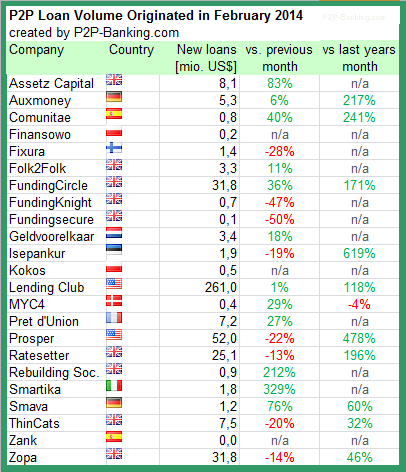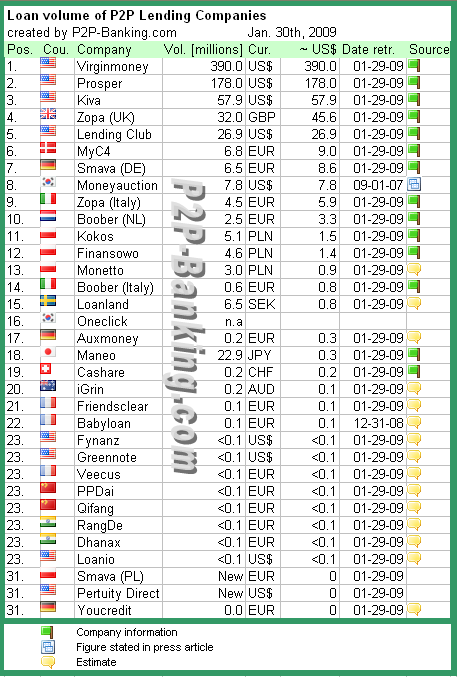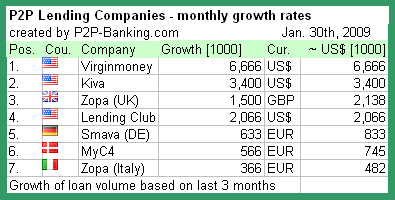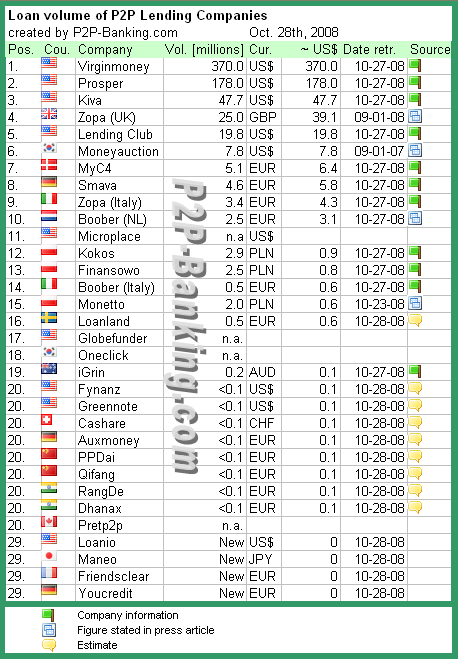This is a guest post by Krystyna Mitręga-Niestrój, University of Economics in Katowice, Poland
P2P lending develops quickly in the world in recent years. The platform Kokos.pl was the beginner at social lending in Poland in February 2008. The following portals began to operate shortly thereafter: Finansowo.pl, Monetto.pl (both in March 2008, however Monetto is not operating any more) and Smava.pl (equivalent to German Smava.de platform). During the first four years of the Polish p2p lending market the value of loans was estimated at PLN 130 million (approx. USD 43 million). It consisted only a small number comparing to the value of consumer loans granted by banks – more than PLN 127 billion (approx. USD 42 billion), as of February 2012. Almost half of this amount (PLN 61 million, approx. USD 20 million) was borrowed through the platform Kokos.pl, which so far has more than 180 thousand users. After five years (situation at the beginning of 2013) from launching the first p2p platform approx. half a million the Polish residents borrowed approx. PLN 250 million (USD 58.5 million) (5 lat pożyczek społecznościowych, 2013). The owners of the p2p platforms earn money mainly on fees charged for transactions. It should be noted, that the information about the p2p lending market in Poland is limited and current, comprehensive data are lacking.
The most important players on the Polish social lending market are: Kokos.pl (with almost 80% share in invested funds through p2p lending platforms), Finansowo, Sekrata, Pożycz, SzybkoiPewnie, Bilonko, Zakra (Zestaw Narzędzi Pożyczkodawcy, 2013). The situation on p2p lending market in Poland is dynamic, however there is more positive tendencies associated with entering of the new players on the market, than the bankruptcies of the p2p platforms. The two examples of the latter are the collapse of Monetto.pl and Ducatto.pl. The Polish peer-to-peer lending market seems to be interesting for foreign p2p platforms (for instance the entrance of Swedish TrustBuddy in 2013).
Taking under consideration the information from the largest p2p platform Kokos.pl (the data include the 5 years period, from the launching of the platform) we can state that the statistical investor and borrower came from Masovian Voivodeship (is the largest, the most populous and the wealthiest voivodeship in Poland), are on average 34 and 33 years old. The statistical borrower borrows on average PLN 2,026 (USD 1.500) for 11 instalments. The average salary is equal to PLN 2,723 (approx. USD 2000).
At the beginning when first p2p lending platforms have launched a great part of Polish society was skeptical about such form of investing and borrowing. The threat of fraud and bankruptcies of p2p platforms hampered the development. However, thanks to changes and refining methods of verification the p2p platforms have became safer. The popularity of social lending is growing steadily in Poland. This trend is, among others, influenced by more attractive offer and promotions of p2p lending platforms. Continue reading


 The terms of SMS loan contracts are predefined. The amount is 500, 1000, 2000 or 3000 PLN, interest rate is locked at 20% p.a. (interest rate cap enforced by Polish anti-usury law) and the duration of loan is limited to 12 months.
The terms of SMS loan contracts are predefined. The amount is 500, 1000, 2000 or 3000 PLN, interest rate is locked at 20% p.a. (interest rate cap enforced by Polish anti-usury law) and the duration of loan is limited to 12 months.


 Polish p2p lending service
Polish p2p lending service